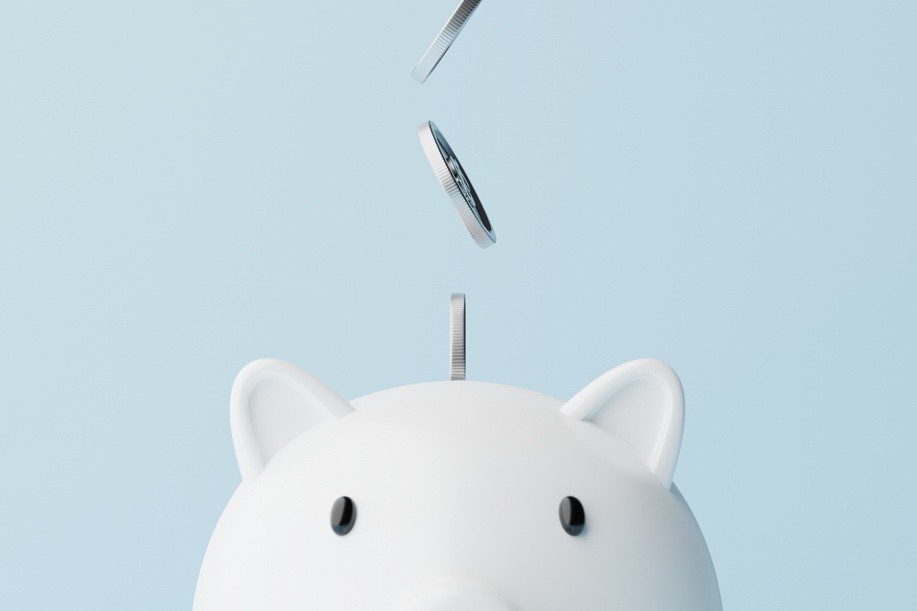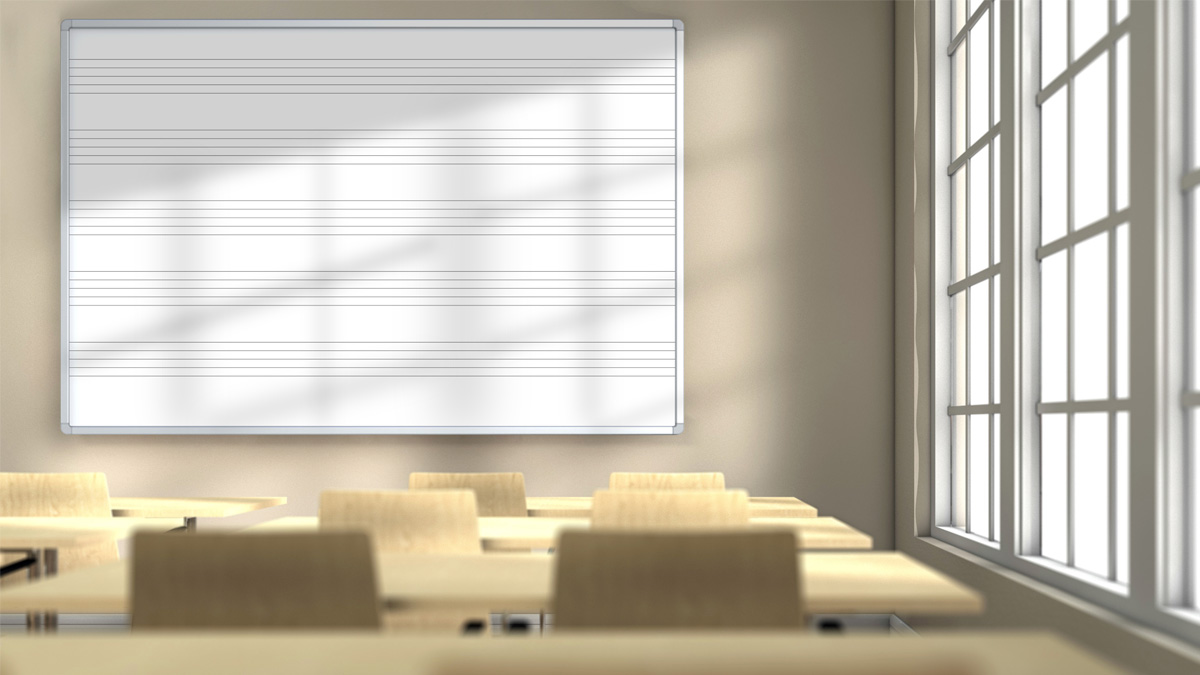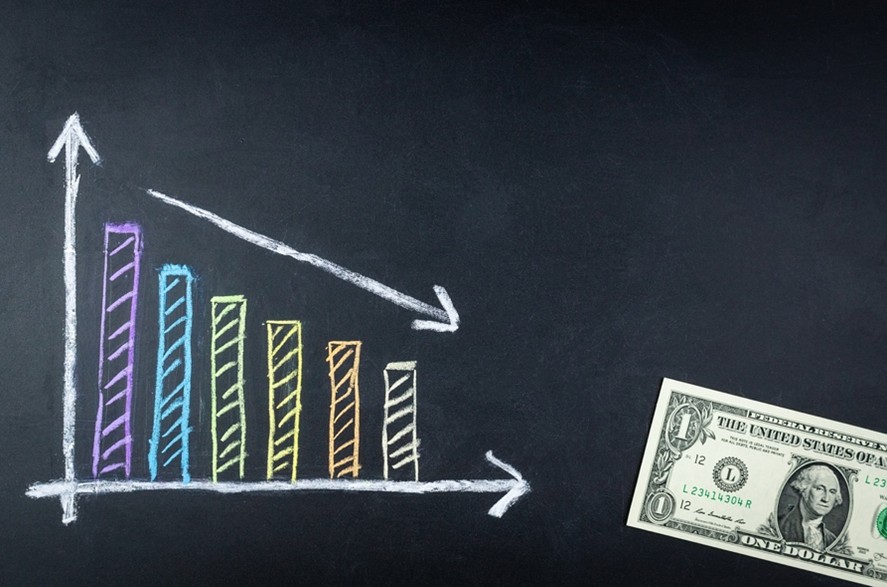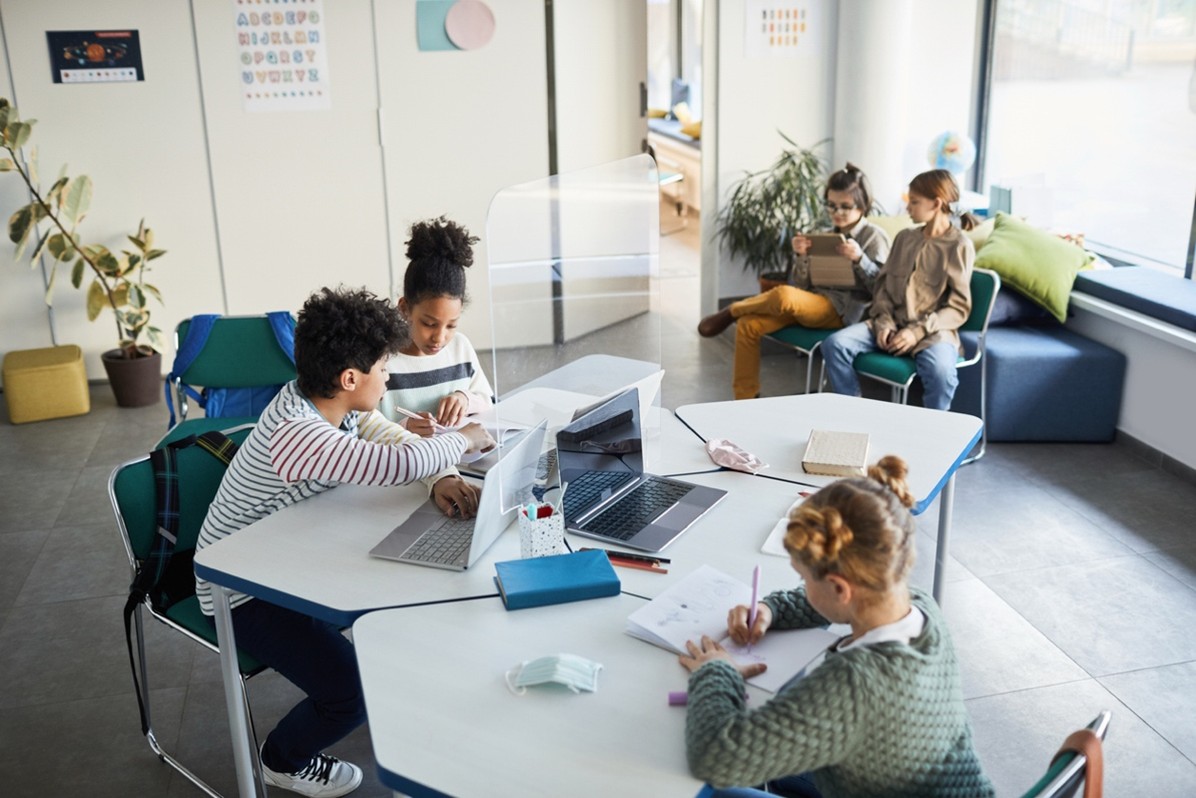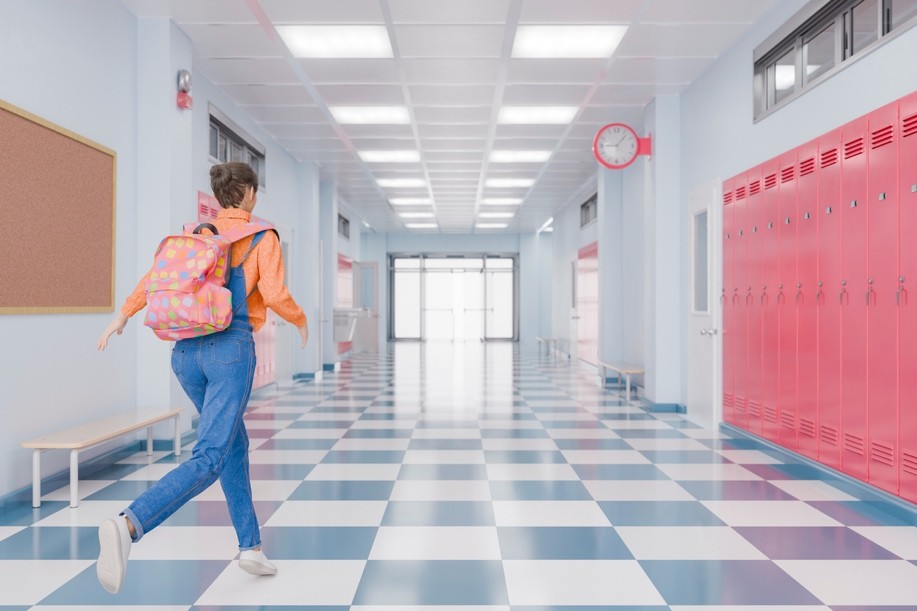The Kinesthetic Classroom Supports Active and Action-Based Learning to Drive Engagement and Improve Learning
Kinesthetic learning is any learning that involves physical activity. Research indicates that the use of kinesthetic equipment in place of traditional seating can create an environment that promotes active and action-based learning and result in increased engagement and on-task behaviors. A recent review of the research found that for elementary school-aged children there was a strong positive correlation between systematically implemented physical activity and on-task behavior.[i] New brain research shows a strong link between the brain, movement, and learning. [ii]

Brain + Movement = Learning
My own experience with kinesthetic learning was profound. My son was brilliant at solving complex and intriguing math problems from a young age, but he was unable to memorize his multiplication tables. His innovative third grade teacher suggested we buy a mini trampoline and use it to help him practice his times tables. Sure enough, it worked! As he bounced up into the air, I would quiz him and he would shout out the answers. Multiplication tables, spelling, language learning, or any school tasks that were repetitive and boring could be paired with physical activities that made him a more successful learner. All children in the elementary grades can benefit from pairing movement and learning, though for some it is especially helpful for focusing attention and increasing time on task. Brain research indicates that there are strong links between the brain, movement, and learning. While active learning has been around for decades, teachers are now pairing it with action-based learning to improve learning and engagement. Researchers are just getting started on investigating links between types of kinesthetic equipment and student learning. Several types of furniture and equipment in classrooms can encourage kinesthetic learning.
What is the Problem We Are Trying to Solve?
In elementary school, one of the biggest challenges to learning is keeping children focused and on task. Being able to focus is connected to the development of executive function and self-regulation skills. It sounds obvious, but for learning to take place, students need to be able to focus their attention on instruction. Researchers estimate that students in elementary school classrooms spend between 10% and 50% of their time off-task.[i] Finding ways to help students sustain attention means providing them with pathways that help them attend to instruction and ignore distractions. Active and action-based learning helps strengthen executive functioning and self-regulation skills that can result in greater academic achievement.[ii] Unfortunately, most classrooms are still set up to encourage sedentary behavior. U.S. children currently spend about 4.5 hours of the school day sitting. This has significant consequences on academic performance and on health.[iii] Encouraging activity in the classroom not only improves learning, but integrating movement throughout the school day can decrease stress, improve psychological health, and create a more positive classroom climate.[iv] A significant side benefit of increasing movement in classrooms is helping address the escalating obesity epidemic for children in the U.S.

Active Learning and Action-Based Learning
The use of active learning in classrooms has been on the rise for decades. Active learning is any instructional method that directly engages students in the learning process as opposed to passively receiving content, such as when listening to a lecture. In active learning, the “active” part means that students are encouraged to think critically, construct knowledge, and explore their own attitudes toward what they are learning.[i] Active learning includes participating in pairs or small group discussions, writing in response to a prompt, engaging in a debate, or creating a concept map to better understand a topic. Action-based learning (ABL) grew out of active learning methods in response to new brain research showing links between physical movement and learning. While active learning calls for students to interact with and construct knowledge, ABL involves actual movement. Simply put, adding movement improves learning outcomes. ABL helps foster the brain-body connection and promotes new knowledge through moving the body.[ii] Movement can be used to give students “brain breaks” by doing jumping jacks in between learning activities or directly inserting movement into the learning, such as jumping up and down while learning to spell the word “jumping.” While active learning strategies and action-based learning can occur in any classroom, environments that are intentionally designed to maximize opportunities for movement can facilitate the implementation of these strategies.[iii]
What Kinesthetic Equipment Best Supports Active and Action-Based Learning?
Many types of kinesthetic equipment are having an impact on improving student engagement, attention, and learning at the elementary school level. Research also shows improvements in learning math skills for K-8 students using kinesthetic equipment. For high school students, research on kinesthetic equipment to support learning has been limited, though some recent research found standing desks to be of value for this age group. At the high school level the only research of note on learning and movement was integrating yoga into the school day, which does not require special equipment other than yoga mats.[iv]
Pedal Desks
Pedal desks, also called cycling desks, are exactly what they sound like. Students can pedal while engaging in learning activities. Research indicates that pedal desks improve learning at the elementary school level, but as of this writing, these studies have only been carried out with small numbers of students.
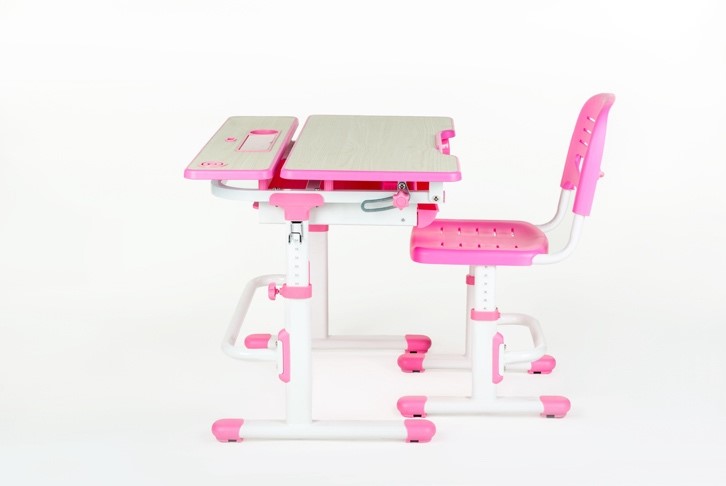
Wobble Chairs or Stools
Wobble chairs are becoming common in classrooms. They provide students with the ability to try different positions for stability and let students who prefer frequent movement to continue to move without distracting other students. Anecdotal evidence and some research suggests that wobble chairs improve time on task for many students.
Strider Desks
Strider desks resemble small ellipticals attached to shared desks to allow students to move and use core and lower back muscles for stability with variable resistance. Some teachers use personal activity trackers in combination with strider desks to encourage student movement while learning.
Standing Desks
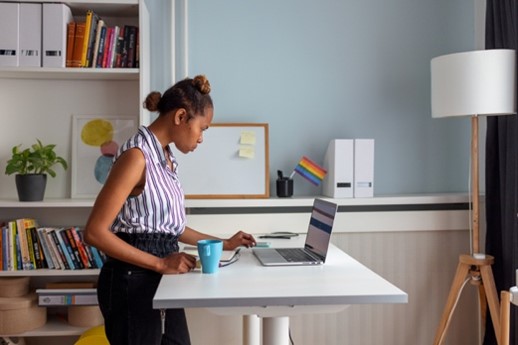
Standing desks, now common in the business world, allow students to move and rearrange themselves around a table to support small group work and decrease sitting time. Standing desks and stand-biased desks can have positive effects on learning outcomes for middle- and high-school students.[i] Benefits of using standing desks for elementary students have also been found in terms of increasing student engagement.[ii]
Exercise/Stability Balls
Compared with results of studies on standing desks, the impact of using exercise balls on student academic outcomes have been mixed. Exercise balls have been shown to improve in-seat behavior of children with ADHD and preschool students with autism.[iii] But other studies have shown no improvement in general education classrooms for neurotypical or neurodiverse students.

In summary, there is clear evidence that designing a classroom using kinesthetic equipment and furniture can greatly benefit learning, especially for younger learners. Physical activity during teaching and learning can increase student attention, improve on task behaviors, and increase academic performance.[i]
[i] Podnar, H., Novak, D., & Radman, I. (2018). “Effects of a 5-minute Classroom-Based Physical Activity on On-Task Behavior and Physical Activity Levels.” Kinesiology, 50(2), 251-259. https://doi-org.ezproxy.uakron.edu:2443/10.26582/k.50.2.17
[ii] Kuczala, M., & McCall, J. (2011). “Get your students moving! Kinesthetic activities help students of all ages learn by doing.” NJEA News. https://www.njea.org/news-and-publications/njea-review/april-2011/getyour-students-moving
[iii]Flippin, Michelle, Clapham, Emily and M. Shane Tutwile (2021). “Effects of using a variety of kinesthetic classroom equipment on elementary students’ on‑task behaviour: a pilot study.” Learning Environments Research (2021) 24:137–151. https://doi.org/10.1007/s10984-020-09321-2
[iv] Mitchell, J. A., Pate, R. R., Dowda, M., Mattocks, C., Riddoch, C., Ness, A. R., et al. (2012). “A prospective study of sedentary behavior in a large cohort of youth.” Medicine and Science in Sports and Exercise, 44, 1081–1087.
[v] Rideout, V., Foehr, U., & Roberts, D. (2010). “Generation M2: Media in the lives of 8 to 18-year-olds.” Kaiser Family Foundation Study. http://www.kff.org/entme dia/8010.
[vi] Centers for Disease Control. (2018). Physical activity facts. https://www.cdc.gov/healthyschools/physicalactivity/facts.htm
[vii] Handelsman, J., Miller, S., & Pfund, C. (2007). Scientific teaching. New York, NY: W.H. Freeman & Co.
[viii] Chisholm, A., & Spencer, B. (2017). “Let’s get moving!: Eight ways to teach information literacy using kinesthetic activities.” Pennsylvania Libraries, 5(1), 26-34. doi: 10.5195/palrap.2017.141
[ix] Kuczala, M., & Lengel, T. (2018). Ready, set, go!: The kinesthetic classroom 2.0. Thousand Oaks, CA: Corwin
[x] Stoepker, P., & Dauenhauer, B. (2020). “Secondary student and teacher perceptions of classroom physical activity. Physical Educator, 77(5), 813–828. https://doiorg.ezproxy.uakron.edu:2443/10.18666/TPE-2020-V77-I5-10108
[xi]Minges, K. E., Chao, A. M., Irwin, M. L., Owen, N., Park, C., Whittemore, R., et al. (2016). “Classroom stand-biased desks and sedentary behavior: A systematic review.” Pediatrics, 137, e20153087
[xii]Flippin, et al. (2021)
[xiii]Fedewa, A. L., & Erwin, H. E. (2011). “Stability balls and students with attention and hyperactivity concerns: Implications for on-task and in-seat behavior.” American Journal of Occupational Therapy, 65, 393–399.[xiv]Flippin, et al. (2021)



